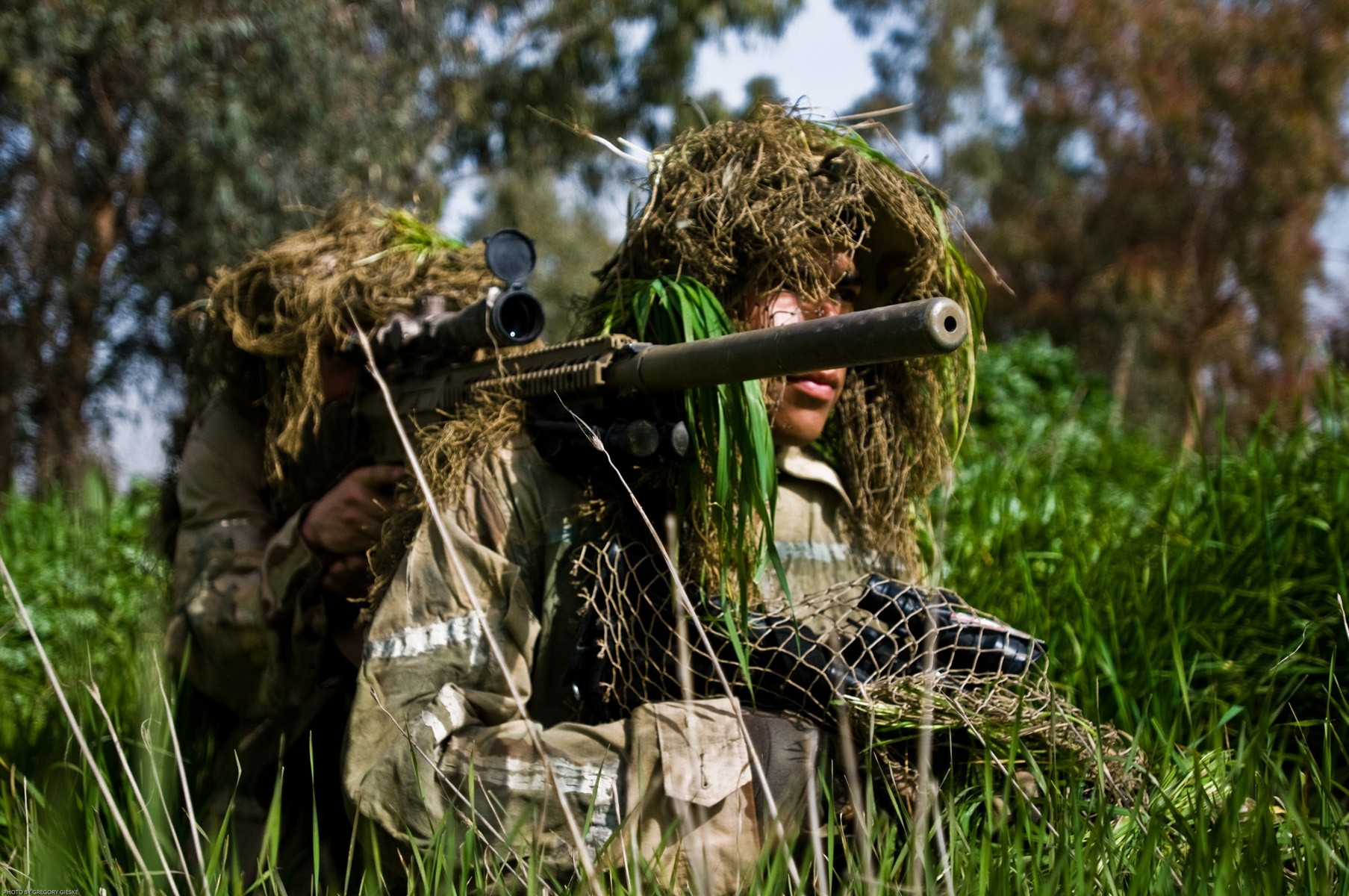FORWARD OPERATING BASE MAREZ, Iraq - While "one shot, one kill," may be the sniper axiom, it doesn't begin to describe the sniper experience.
Not only must snipers be excellent shooters, they must also be disciplined and patient. They must have expert field skills, including concealment and camouflage, in order to infiltrate, detect and stalk a target through all types of terrain and distances - before firing their shot.
It was exactly those concepts that snipers from 1st Battalion, 36th Infantry Regiment, 2nd Heavy Brigade Combat Team, 3rd Infantry Division, taught to 22 Iraqi Army Special Forces soldiers during a recent sniper course held at the Al Kindi Iraqi Army base. The Iraqis learned basic sniper techniques, stalking and detecting targets, then spent days firing at the range.
The instructor Bob did not want to give his actual name due to security concerns.
Bob has served as the unit's sniper section leader for the past two years since joining the unit at Fort Bliss, Texas.
"A sniper is a combat multiplier for a battalion," said "Bob" the 1/36 Inf. sniper section leader and sniper course instructor. "Their first mission is to provide long-range precision fire, anywhere from 600 yards to over one thousand yards. Our second mission is to observe and report what we see on the battlefield to the commander. If the target presents itself, we then engage and get rid of it."
"The reward comes from the interaction with my teams and being able to mold them into great snipers," he said. "Just seeing them engage targets at those distances, where most Soldiers only hit targets at three hundred yards, is awesome. We not only consistently hit at three hundred yards, but we triple that distance."
As a Stability Transition Team advisor to the 7th IA Brigade, 2nd IA Division, it's Lt. Col. Michael Haber's job to train, advise and assist his Iraqi counterparts. The Iraqis identified sniper training as a battlefield weakness, he said, which they wanted to correct.
Just watching the Jundis, or lower enlisted soldiers, interact with the U.S. Soldiers on a day-to-day basis has been impressive, he said.
"The Iraqis are doing very well," Lt. Col. Haber said. "They had a lower baseline than most U.S. Soldiers, so there were some things we had to do to get them up to a functional level before we could teach some of the higher-end, specialty characteristics of being a sniper."
According to Capt. David Fierner, commander of Headquarters and Headquarters Company, 1/36 Inf., his Soldiers provided a definitive, hands-on education based upon their practical knowledge and experience.
"Our snipers trained the Iraqis in all the proper basics of sniper training, so we can eventually take them out on mission, and they can start covering their own sectors," he said. "We're training them on all the fundamentals - from stalking, shooting, target detection, gathering dope on their weapons and firing at longer ranges than they normally would."
"I think it's great for our Soldiers to actually interact with the Iraqi soldiers," Capt. Fierner added. "I also think it's great for the Iraqi soldiers to see that our enlisted Soldiers can train them; that they have the proper skills and can broaden their spectrum."
"At first, it was somewhat of a culture shock for the Iraqis, going from their everyday army life to living the life of a sniper," Bob said. "They're finally starting to understand that, as a sniper, you won't always have ideal conditions, or even ones you'll like. You have to make do with what you have."
Once the classroom portion ended, Iraqi soldiers began building their own ghillie suits from burlap bags and camouflage material. The ghillie is a camouflaged suit used to conceal an individual as they're stalking. The term came from Scottish gamekeepers, known as "ghillies," who developed a suit, which allowed them to blend into the scenery in search of poachers.
Using two-man teams of a shooter and a spotter, the Iraqis then got the opportunity to stalk targets in the lush vegetation of the Al Kindi Iraqi Army base.
"We started out with a preparation phase of about five hundred meters," the sniper leader said. "A sniper can stalk anywhere from two hundred to three thousand meters before settling into their final firing position. From there, they engaged their presented target."
The course concluded with the Iraqis shooting at the firing range at Forward Operating Base Marez in Mosul. Beginning at 50 meters, they fired a variety of U.S. weapons as well as their own Army-issued MK76 Yugoslavian sniper rifles, ultimately reaching the 400-meter-limit of the range.
"The Jundis out here today are definitely building confidence and acquiring new skills in shooting," Capt. Fierner said. "They've definitely grown, and we've built up their confidence. We'll continue to push them and improve their skills.
"U.S. forces have learned a tremendous amount of skills working with the Iraqis, such as how they learn and how they function as a unit. We're building friendships, and we're building partnerships. That's something that was unexpected, but it's definitely a gain for us," Capt. Fierner said.
"They're obviously better off now then they were at the beginning," said Bob. "We gave them a good baseline; however, being a sniper, you have to keep up on your sniper skills. It's very important, due to it being a perishable skill. If you don't practice, it'll fade away."
"This has been a very good partnership," Lt. Col. Haber said. "This is the advent of a sniper program for this division. I think in the future, there will only be good things that will come out of this, benefiting both the brigade and the division. Most importantly, however, are the effects we want to have on the battlefield in the future."








Social Sharing